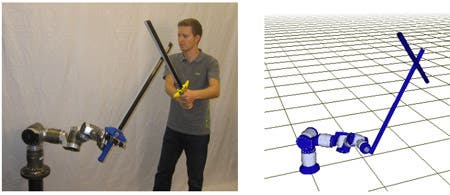If you think giving a robot a sword and teaching him how to use is a bad idea, you may be just about half wrong. A young robotics PhD student at Georgia Tech has programmed a robot how to sword fight, in terms of only defending itself against attacks in order to simulate the sudden movements of humans through robotic environments and avoid those as well.
“In order to deploy safe and flexible robots for service and automation, robots must act safely in close contact with humans,” said Tobias Kunz, the Georgia Tech researcher.
The basis of his idea is that by programming a robot ninja (I couldn’t help myself), is that, as like in any sword fight, you teach it how to predict human movement and how to react to it. In this case, a robot could retract an arm or circle round a human if he’s in a certain proximity or acts according some kind of predefined pattern.
It’s a very interesting idea, which could lead to impressive advances by making robots dynamically safe. So far, his model is only virtual, which you can view below, but like you’ve already seen in the caption above could be turn applicable.
Kunz worked together with colleagues Peter Kingston, Mike Stilman, and Magnus Egerstedt, on their ICRA paper was titled, “Dynamic Chess: Strategic Planning for Robot Motion,” and was presented this week at the IEEE International Conference on Robotics and Automation (ICRA).
[via IEEE Spectrum]







